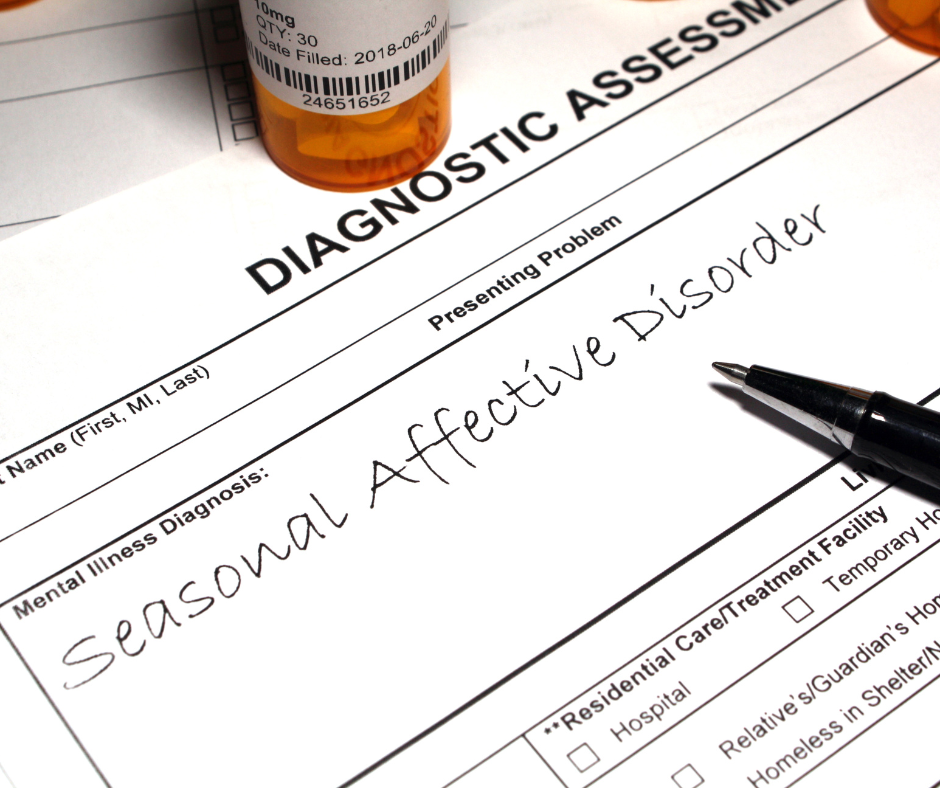Seasonal Affective Disorder (SAD) is a type of mood disorder characterized by recurrent episodes of depression that occur at specific times of the year, typically during the fall and winter months when daylight hours are shorter. While less common, some individuals may also experience SAD during the spring and summer months, although this is rarer. If like me, you struggle with winter and the impact that is has on your mental health, then you probably can relate. I find spring and the arrival of lighter and brighter days, a huge relief.

The exact cause of SAD is not fully understood, but it is believed to be related to changes in light exposure, which can disrupt the body’s internal clock (circadian rhythm) and affect neurotransmitter levels in the brain, particularly serotonin and melatonin. Reduced sunlight exposure during the darker months can lead to alterations in these neurotransmitters, which play a crucial role in regulating mood, sleep, and appetite.
Common symptoms of SAD include persistent feelings of sadness, hopelessness, and irritability, along with changes in sleep patterns (such as oversleeping or insomnia), appetite (increased cravings for carbohydrates and weight gain), low energy levels, difficulty concentrating, and social withdrawal. These symptoms can significantly impact an individual’s daily functioning and quality of life.
Treatment for SAD typically involves a combination of light therapy, where individuals are exposed to bright artificial light to simulate natural sunlight, psychotherapy (such as cognitive-behavioral therapy), medication (such as antidepressants), and lifestyle changes (such as regular exercise and spending more time outdoors during daylight hours). In some cases, individuals may benefit from a combination of these approaches.
While SAD can be challenging to manage, with appropriate treatment and support, many individuals can effectively alleviate symptoms and improve their overall well-being, enabling them to better cope with the seasonal changes that trigger their depression.
Managing Seasonal Affective Disorder (SAD) involves a combination of lifestyle changes, therapy, and sometimes medication. Here are some strategies to help alleviate symptoms and feel better:
- Light Therapy: Light therapy, also known as phototherapy, involves exposure to a bright light box that simulates sunlight. This can help regulate the body’s internal clock and improve mood. Use the light box for about 20-30 minutes each morning, preferably within the first hour of waking up.
- Spend Time Outdoors: Take advantage of natural sunlight by spending time outdoors during daylight hours, even on cloudy days. A walk in the park or spending time in a well-lit outdoor space can help boost mood and energy levels.
- Regular Exercise: Engage in regular physical activity, as exercise is known to improve mood and reduce symptoms of depression. Aim for at least 30 minutes of moderate-intensity exercise most days of the week.
- Healthy Diet: Maintain a balanced diet rich in fruits, vegetables, whole grains, and lean proteins. Limit consumption of sugary and processed foods, as they can negatively affect mood and energy levels.
- Mindfulness and Relaxation Techniques: Practice relaxation techniques such as deep breathing, meditation, yoga, or progressive muscle relaxation to reduce stress and promote relaxation.
- Social Support: Stay connected with friends and family members, and participate in social activities that you enjoy. Sharing your feelings with others can provide emotional support and alleviate feelings of isolation.
- Therapy: Consider therapy, such as cognitive-behavioral therapy (CBT), which can help you identify and change negative thought patterns and develop coping strategies for managing symptoms of SAD.
- Medication: In some cases, medication may be prescribed to help alleviate symptoms of SAD, particularly if other treatments have not been effective. Antidepressants, such as selective serotonin reuptake inhibitors (SSRIs), are commonly used to treat SAD.
- Maintain a Regular Routine: Stick to a regular daily routine, including consistent sleep and wake times, to help regulate your body’s internal clock.
- Seek Professional Help: If you’re struggling to manage symptoms of SAD on your own, don’t hesitate to seek help from a mental health professional. They can provide personalized treatment recommendations and support tailored to your individual needs.